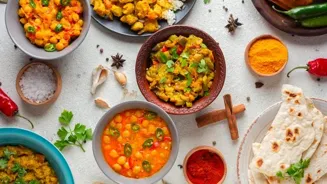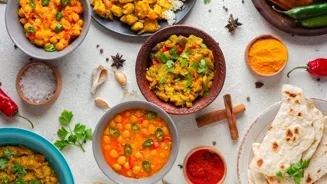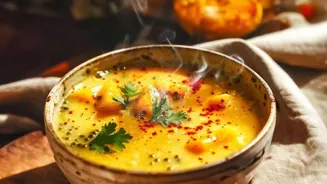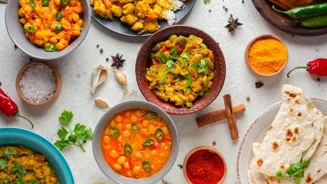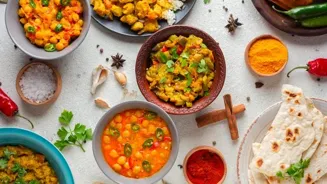Discover the world of Indian lentils with our guide to delicious dishes for every palate. Read on for recipes and tips!
Lentils, or dals as we lovingly call them in India, are a staple in most Indian households.
They are packed with protein, fibre, and essential nutrients, making them a powerhouse of good health.
But beyond the health benefits, dals are incredibly versatile and offer a delightful range of flavours and textures to tickle your taste buds. From the creamy smoothness of Dal Makhani to the tangy zest of Amti, there's a lentil dish for every palate.
This article guides you through a delicious journey of Indian lentil cooking, providing easy-to-follow recipes and tips to create delightful meals that will impress your family and friends. Get ready to discover the magic of Indian dals!
Let’s start with a classic
Dal Tadka. This is perhaps the most commonly prepared lentil dish in India, and for good reason. It’s simple, wholesome, and incredibly flavourful. The base is usually a mix of toor dal (split pigeon peas) and masoor dal (red lentils), though you can stick to just one.

The magic lies in the “tadka,” the tempering of spices in ghee or oil that is added at the end. The aroma of cumin seeds, mustard seeds, and garlic sizzling in hot oil is enough to make anyone’s mouth water.
To make Dal Tadka, you'll need about one cup of lentils, which you'll need to wash thoroughly and soak for at least 30 minutes. Soaking helps them cook faster and more evenly. Then, pressure cook or boil the lentils until they are soft and mushy. While the lentils are cooking, prepare your tadka.
Heat ghee or oil in a small pan, add cumin seeds, mustard seeds, and let them splutter. Then add chopped garlic, green chilies, and a pinch of asafoetida (hing). Sauté until the garlic turns golden brown.
Finally, pour the tadka over the cooked lentils, add salt, turmeric powder, and a squeeze of lemon juice. Garnish with fresh coriander leaves and serve hot with rice or roti. You can adjust the spiciness according to your preference by adding more or fewer green chilies.
A good tip is to add a small piece of ginger to the lentils while cooking; this aids digestion and adds a pleasant flavour.
Now, let's move on to something a bit richer and creamier
Dal Makhani. This is a North Indian delicacy that is often served at weddings and special occasions. It's made with whole black lentils (urad dal) and kidney beans (rajma), slow-cooked overnight on low heat to develop a deep and smoky flavour.
The addition of cream and butter makes it incredibly rich and indulgent. Though traditionally cooked over a wood fire, you can easily adapt the recipe for your stovetop. Soak urad dal and rajma overnight.
The next day, pressure cook them with ginger, garlic, and green chilies until they are very soft. Heat butter in a pan, add chopped onions and sauté until golden brown. Add ginger-garlic paste, tomato puree, and spices like garam masala, red chili powder, and turmeric powder.
Cook until the tomatoes are well-cooked and the oil starts to separate. Add the cooked lentils and rajma to the pan, along with cream and butter. Simmer on low heat for at least an hour, stirring occasionally. The longer you cook it, the better the flavour will be.
Garnish with fresh cream and coriander leaves before serving. Dal Makhani is best enjoyed with naan or roti. For a vegetarian version, use vegetable broth instead of chicken broth. Instead of cream, you could use cashew cream for a vegan option.
Next, we explore a South Indian favourite
Sambar. This tangy and flavorful lentil stew is a staple in Tamil Nadu, Karnataka, and other South Indian states. It's made with toor dal and a variety of vegetables, simmered in a tamarind-based broth with sambar powder, a unique blend of spices.
Sambar is incredibly versatile and can be served with rice, idli, dosa, or vada. To make Sambar, start by cooking toor dal until it’s soft. While the dal is cooking, chop your vegetables. Popular choices include drumsticks, okra, eggplant, pumpkin, carrots, and tomatoes.
Heat oil in a pan, add mustard seeds, cumin seeds, and fenugreek seeds. Once they splutter, add chopped onions and sauté until golden brown. Then add your vegetables and sauté for a few minutes. Add tamarind extract, sambar powder, turmeric powder, and salt.
Bring to a boil, then simmer until the vegetables are cooked through. Add the cooked dal to the pan and mix well. Simmer for another 10-15 minutes to allow the flavours to meld together. Garnish with fresh coriander leaves and serve hot. Sambar powder is key to the authentic flavour of Sambar.
You can find it in most Indian grocery stores. If you want to make your own, there are many recipes available online. A pinch of jaggery can also be added to balance the tanginess of the tamarind.
Moving eastward, let's explore a Bengali classic
Cholar Dal. This sweet and slightly spicy lentil dish is often served during festivals and special occasions in West Bengal. It's made with chana dal (split chickpeas) and coconut, and flavoured with ginger, bay leaves, and a touch of sugar.
Cholar Dal has a lovely aroma and a creamy texture that is simply irresistible. To make Cholar Dal, wash the chana dal thoroughly and soak it for at least an hour. Then, pressure cook or boil the dal until it’s soft but not mushy.
Heat ghee in a pan, add bay leaves, dry red chilies, and ginger paste. Sauté for a minute, then add grated coconut and sauté until lightly browned. Add the cooked dal to the pan, along with turmeric powder, red chili powder, and salt. Simmer on low heat for 15-20 minutes, stirring occasionally.
Add sugar and garam masala and cook for another 5 minutes. Garnish with chopped coriander leaves and serve hot. Cholar Dal is traditionally served with luchi (deep-fried flatbread) or rice. The sweetness of the dish complements the spiciness of other Bengali dishes.
Remember not to overcook the dal, as it should retain its shape.
Maharashtrian Amti: tangy lentil soup with toor dal, kokum, goda masala, coconut
For a Maharashtrian flavour, try Amti. This tangy and slightly sweet lentil soup is a staple in Maharashtra. It’s made with toor dal and kokum, a souring agent that gives it a unique flavour.
Amti is typically seasoned with goda masala, a special Maharashtrian spice blend, and garnished with coconut and coriander. To make Amti, cook toor dal until it is soft and mushy. Heat oil in a pan, add mustard seeds, cumin seeds, and asafoetida.
Once they splutter, add curry leaves and green chilies. Sauté for a minute, then add chopped onions and sauté until golden brown. Add tomato, Kokum, Turmeric Powder, Chilli Powder & Goda Masala. Sauté for 3-4 Minutes. Add the cooked dal to the pan and mix well.
Simmer for another 10-15 minutes to allow the flavours to meld together. Garnish with fresh coconut and coriander leaves and serve hot. Goda masala is a signature spice blend that gives amti its unique flavour. You can find it in most Maharashtrian grocery stores.
Add the Tomatoes at the end, It will retain its flavour. Serve hot with rice as a light lunch.
Finally, let’s explore a simple and comforting Gujarati Dal
Gujarati Dal. This dal is known for its sweet, sour, and spicy taste. The addition of peanuts and jaggery is what makes this recipe different. It's made with toor dal. Jaggery, peanuts, and spices give it a unique flavour. Add Ginger and Chilli paste to make it spicier.
To make Gujarati Dal, cook toor dal until it is soft and mushy. Heat oil in a pan, add mustard seeds, cumin seeds, and asafoetida. Once they splutter, add curry leaves and green chilies. Sauté for a minute, then add chopped onions and sauté until golden brown.
Add tomato, Jaggery, Turmeric Powder, Chilli Powder, Dhaniya Powder, Peanuts. Sauté for 3-4 Minutes. Add the cooked dal to the pan and mix well. Simmer for another 10-15 minutes to allow the flavours to meld together. One can add Lemon for the best and sour taste.
Garnish with fresh coconut and coriander leaves and serve hot. This makes for a simple and easy lunch. It goes best with Rotis and Parathas. Enjoy!
Explore diverse Indian lentil dishes, create signature recipes
These are just a few examples of the many delicious lentil dishes you can make in India. With a little practice and experimentation, you can create your own signature dal recipes that will be loved by everyone. So, get into the kitchen and start exploring the world of Indian lentils!
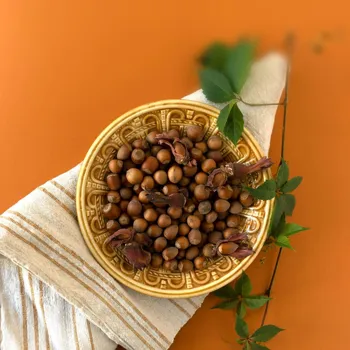
Remember to adjust the spice levels according to your palate, and don't be afraid to try new combinations of spices and vegetables. Happy cooking!
